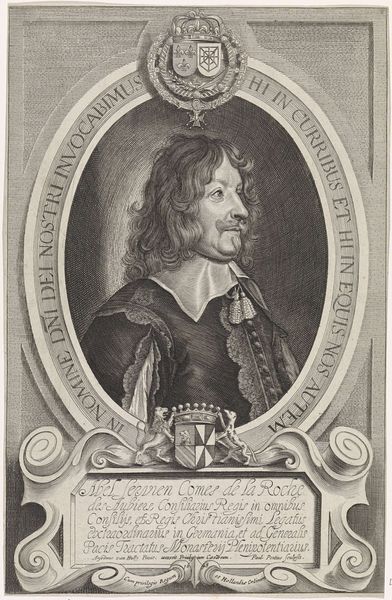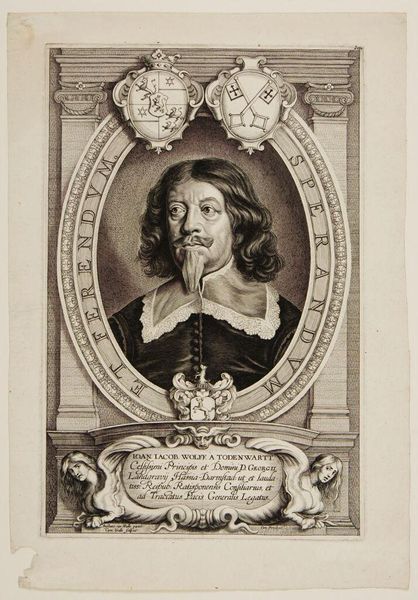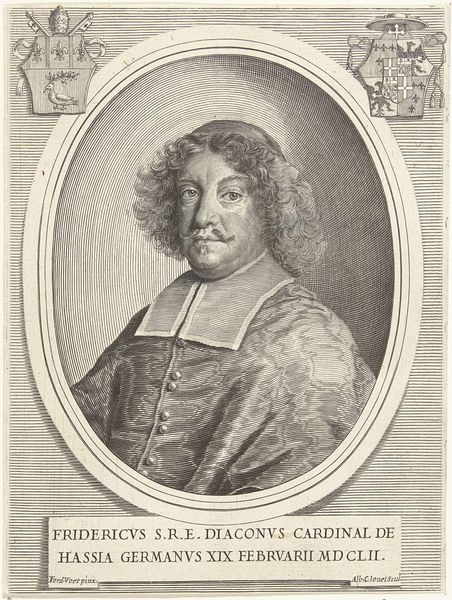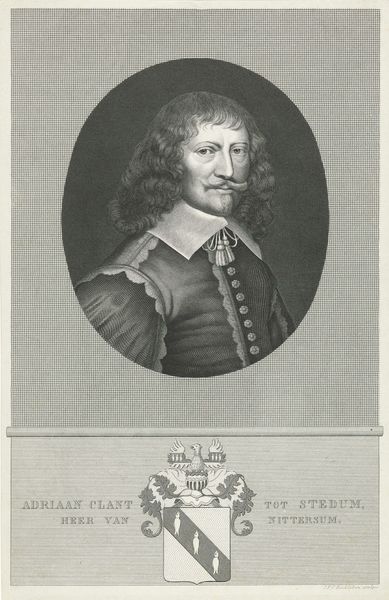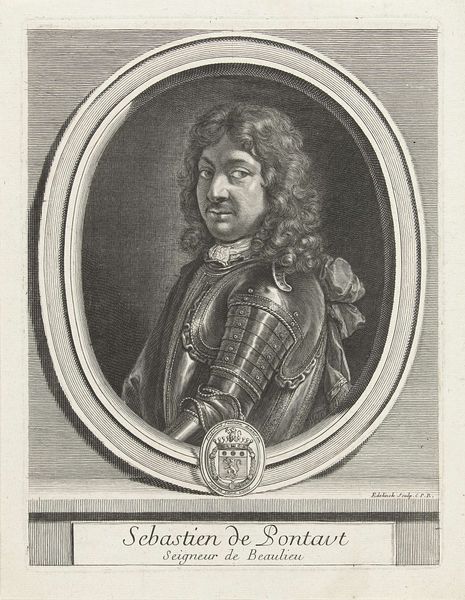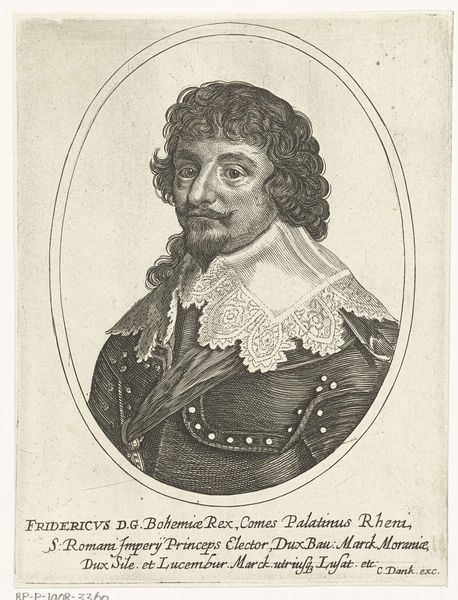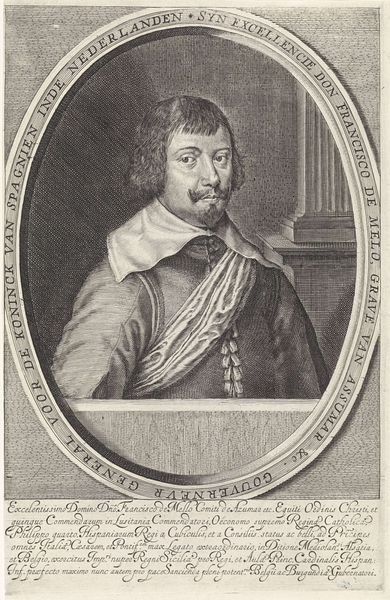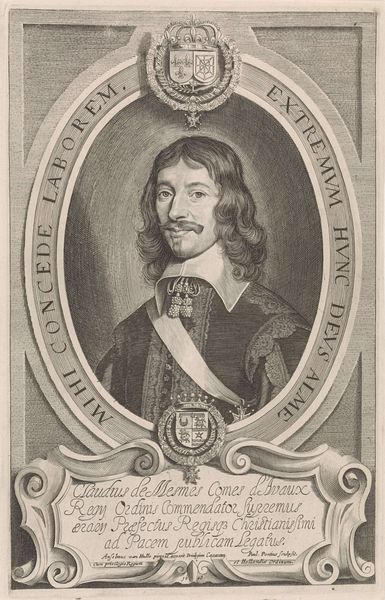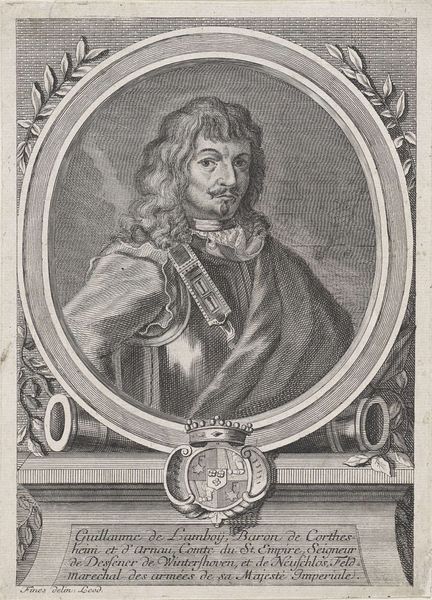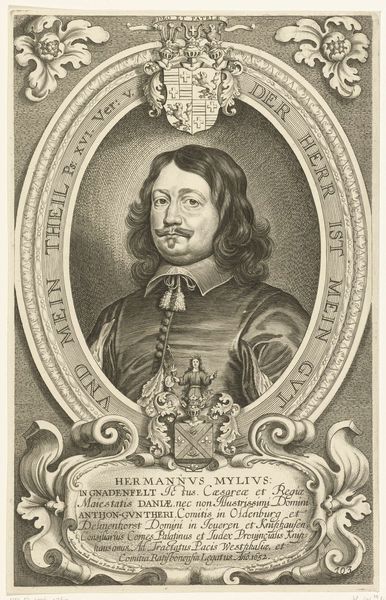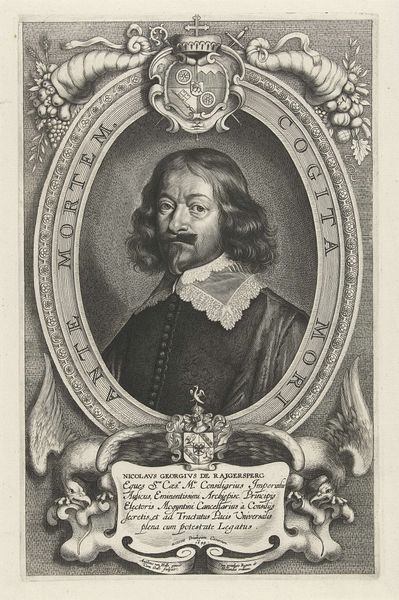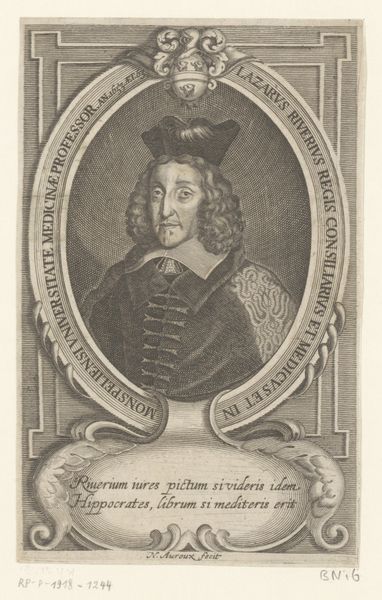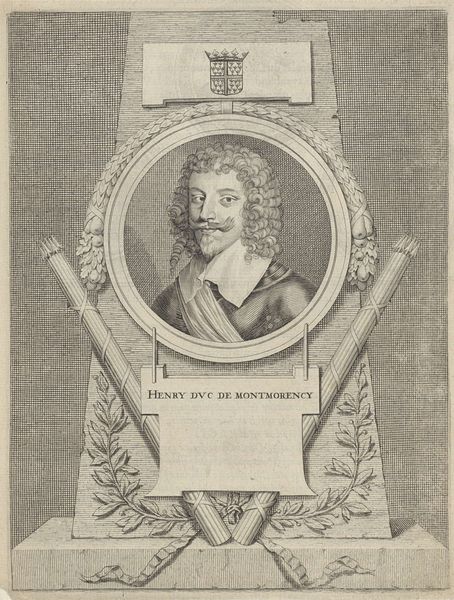
print, metal, intaglio, engraving
#
portrait
#
baroque
# print
#
metal
#
intaglio
#
caricature
#
history-painting
#
engraving
Dimensions: height 307 mm, width 203 mm
Copyright: Rijks Museum: Open Domain
Pieter de Jode II created this print of Johann-Balthasar Schneider, sometime in the 17th century. The portrait is encased within a decorative oval frame, filled with flourishes typical of the baroque. Note how the stark linearity of the lettering contrasts with the curves and undulations of the ornamental border. It’s a deliberate tactic, creating a visual push and pull. The careful hatching and stippling model Schneider’s face, and the light catches the sheen of his hair. Below the portrait, an inscription is framed by a rectangular cartouche. De Jode is using a hierarchy of forms, from the soft rendering of the face to the sharp lines of the text, to signal what’s most important. Consider, too, how the print functions as a symbolic representation of power and status. It uses semiotic signs to communicate ideas about identity, authority, and cultural values. De Jode's print serves not just as a likeness but as a carefully constructed statement about the sitter's place in the world.
Comments
No comments
Be the first to comment and join the conversation on the ultimate creative platform.
